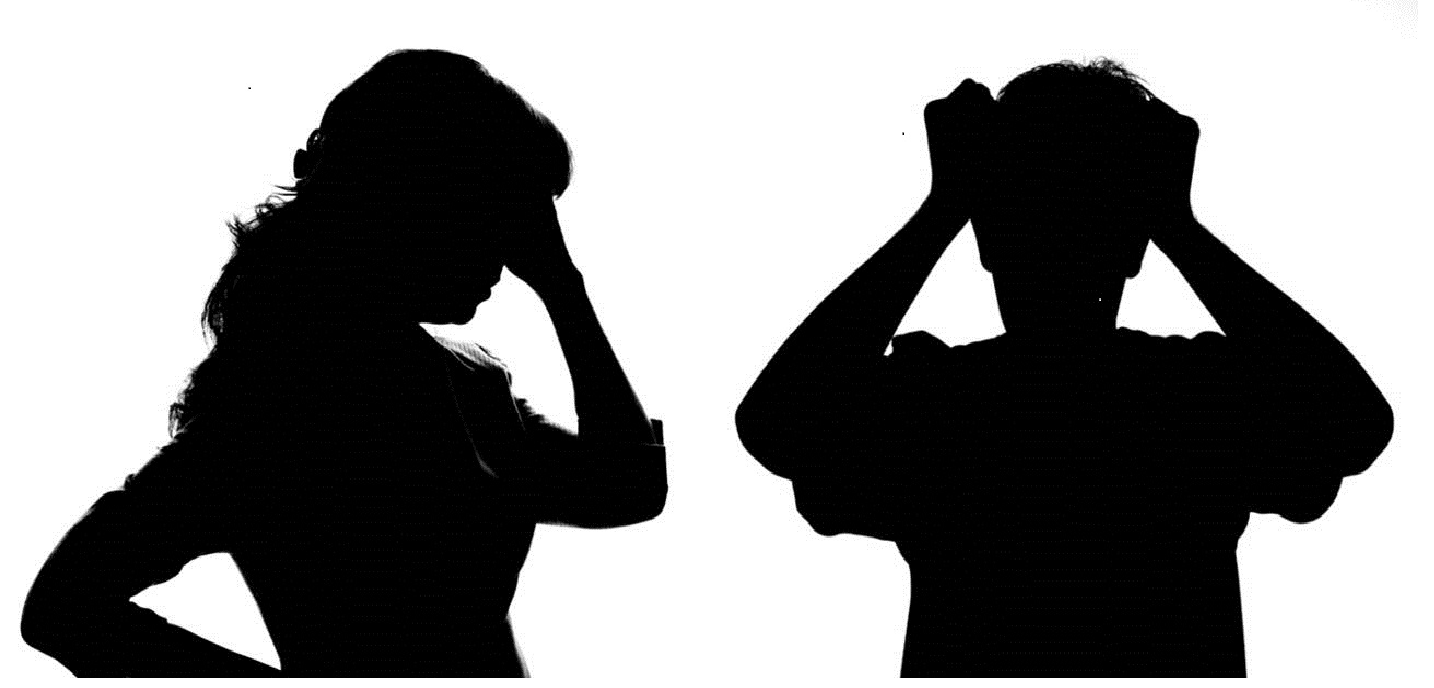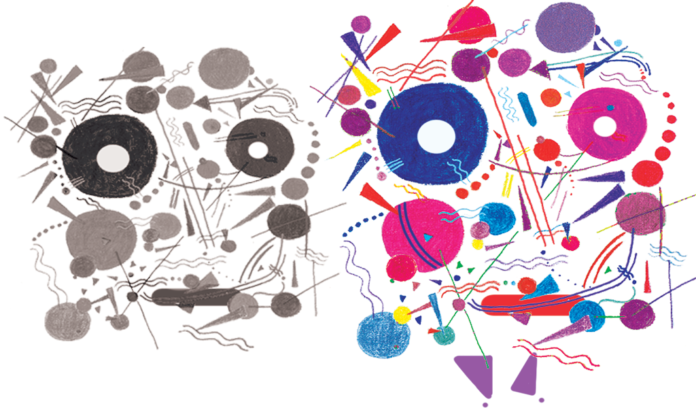The topics of women and mental health typically intersect at an uncomfortable point that, like so many other core elements of our society, is rooted in the patriarchy. The practice and dissemination of the mental health arts was a prototypical male profession as it emerged in the late 1800s and early 1900s, its central modern figures mostly men (Freud, Pavlov, Kanner, Lacan). The code of ethics and modus operandi of psychoanalysis was forged around the implicit idea that the examiner is male and the patient could be of any gender.
But the first people in analysis were overwhelmingly female, like Freud’s oft-written about patient, Dora, and the hundreds of Victorian women diagnosed with everything from hysteria to sociopathy; now, with depression and anxiety. Decades of over-diagnosing and experimentally treating women is mirrored in literature by a parade of “insane” women locked up attics, from the narrator of Charlotte Perkins Gilman’s 1892 short story, “The Yellow Wallpaper”, through the Gothic masterpieces, to the cornucopia of unwell women in the 1999 film, Girl, Interrupted.
Society has had no problem gaslighting women for the better part of modernity, pinning on us an array of nervous ailments presented as specifically female disorders. This perceived propensity toward hormonally-induced and nervous conditions has been used against us to impugn our abilities and capability to perform high-functioning and managerial tasks. The trope of the crazy girlfriend informs contemporary relationships in real life as much as in sitcoms; our female CEOs and politicians still struggle to demonstrate a steely immunity to sentiment beyond what is required of their male counterparts, lest they be accused of acting “unstable.”
This is not to say that mental illness in men is portrayed in a better, more empathetic way. Male characters with psychiatric conditions are also grossly exaggerated, written as roles that give actors the opportunity to deliver over-the-top performances like Anthony Hopkins’ “Hannibal Lechter,” Christian Bale’s “American Psycho,” and the menagerie of psychopaths and perverts that populate the Law and Order franchises. By now it’s become clear that none of these stereotypes and hyperboles benefit the still-stigmatized view of mental illness in our culture. And while no one is a winner, men are the ones being left behind in our attempt to conquer this stigma.
The kernel of truth buried deep within these unhelpful representations is that in real life men and women both experience and exhibit mental health challenges differently, due to possible biological and clear social reasons. For example, a 2003 British study shows that while women statistically report symptoms of depression and anxiety two and a half times more frequently than men, many more men than women seek help for substance abuse issues. The evidence on PTSD (post-traumatic stress disorder) shows a far greater incidence in women (20.4%) than men (8.1%), clearly explained by the far greater incidence of sexual assaults on women worldwide.
But mental health providers don’t know for sure whether women biologically are primed to experienced mood disorders, eating disorders, and OCD symptoms or if it’s the centuries of stress we feel as caretakers, organizers, and householders has been resulted in the development of these conditions. Studies seem to show men and women experience mental health issues equally, despite our physiological differences, but that the social trauma we are subjected to in our culture makes us more prone to some symptoms more than others, like dementia, but also feelings like sadness, and apathy.
We cannot decide whether women are more likely to experience depression because we are biologically primed to perform feats of hormonal dexterity (like menstruating and birthing children), or if it’s because of the patriarchy keeps us mentally in a homebound space. We don’t know if it’s just that men rage, self-medicate, and develop more chemical dependence issues because of their genetics and hormones, or if our culture prohibits them sadness and gives them too much time to hang out at the bar. Like in most nature/nurture debates, each of these are likely factors, as is the conditioning with which mental health providers recognize and treat those who need it. The sword of stigma is sharp and it cuts both ways.
Women have long been victimized, making us prone to certain conditions. We’ve then been oppressed by the over-diagnosis and treatments for some of these conditions. Men have been all but abandoned. We are for this reason the best equipped to help men get the visibility they need in this sphere, one of the few in which they didn’t take up the spotlight. This fact alone: the rate of male suicide in the United States exceeds women’s four to one. Though women are twice as likely to experience mental health concerns and seek treatment, men’s reluctance to admit to the struggle and to commit to medication when it is indicated, drives four times as many of them to a final and irrevocable resort.
A ten-year study conducted by the National Institutes of Health probes the likelihood that men will seek support in one another the way women often do. The results did not surprise me, as it seems quite clear in our culture that men are not encouraged to speak about their feelings. The vast majority of the test subjects, who ranged in age, marital status, and socioeconomic advantage, would consider speaking to a woman about their feelings and fears but would not even consider talking to another man. Many admitted to feeling primed to shame any man who would try.

Men “compartmentalize” relationships, meaning guys have no problem paling around town with their buddies for hours on end, but they may never have a single deep conversation in all that time. Those talks, they save for their wives, girlfriends, and mothers. Feelings are considered to be our territory and men grossly lack social supports to help them through tough times. They may have a social network but it provides them too small a net.
Meanwhile, women have found ways to rely on one another to fill in the gaps between or replace ineffective medical treatments. This safety net might even stand in for treatment, even insufficiently, in that it won’t necessarily best manage the issue, but our social connections seems to be keeping more of us in the fight. Even bearing the brunt of motherhood and raising children makes women more likely to stick around for the benefit of our kids.
Men rely on women for connection, but many men don’t have women in their circles. Some don’t even know to seek these connections out. As the mother of boys, I definitely see that the trope that women talk about their problems while men muscle through begins early. We still need much work on that as a society, but in order to effectively reach anyone who needs treatment, we have to dig deeper than even each other. More surprising to me than the gendering of the stigma is that mental illness itself is still taboo in 2019. Most people who suffer from mental illness need professional help to get better — even talking to good friends won’t be enough. And while women are doing better than men in seeking assistance and following through with treatment, both genders are still underreporting our own symptoms.
According to the World Health Organization, physicians tend to under diagnose psychological conditions, with a rate of accuracy of less than 50%. We can imagine that this is because an average doctor’s visit is short and highly specialized, so that we might be dragging ourselves through a cloud of depression to get to the ENT, but she’ll spend three and a half minutes diagnosing a sinus infection and miss the signs of our sadness while she’s writing out the script.
Mental health screenings are not routine parts of medical examinations, except for the first few postpartum checkups for women who have the opportunity to become mothers (and even this has been proven insufficient to fully address maternal depression). This inadequate check-in excludes all other female patients and men. As patients, we are lacking in the confidence or perhaps the information to reach out, unprompted, to our providers. Only 2 out of every 5 people who experience anxiety, mood, or substance dependence disorders report them to a doctor within the first year of struggle.
This all amounts to a public health crisis, in which mental health conditions are both known to be debilitating to the sufferer and fairly common, but seemingly out of help’s reach if we don’t find a way to break the taboo. Depression and its offshoots is projected to reach the number two spot in causes of global disability by 2020. While the figures indicate that all genders could use a little more help than they are currently receiving, dispelling the myth around men’s mental health specifically might be the last taboo we need to kill to finally give everyone the psychological support they need.
As much as it has been a grueling millennium under the male psychiatric gaze, our high visibility as patients has afforded us women a much greater emotional literacy than our male counterparts. Men have difficulty finding someone to talk to and accepting their own vulnerability, but they likely don’t even know what symptoms mean or realize they manifest differently.
If men are conditioned to think that depression is only manifest as sadness and sadness is weakness and weakness is for women, how are they supposed to realize that depression to them might feel like anger, instead? Since men, especially in some cultures, are not socially expected to multitask between work inside and outside of the home, how would they know that they would actually be capable of far more if they took care of their mental health?
An essential step in dispelling the myths that prevent men from getting the help they need is a reminder that disease does not discriminate and they are vulnerable to the same conditions we are. Next, we all need to be better educated on how these conditions manifest. While a depressed woman might recognize listlessness as a symptom, a man who engages in high-risk behavior might not be able to confront that this is a result of an underlying condition and not a socially-encouraged show of virility. Symptoms vary from one individual to another, and we are particularly ignorant about behaviors that appear to be more prevalent amongst men.
The time to get acquainted with the hallmarks of mental conditions is now. According to reports recently published in Men’s Health, depression and anxiety are affecting men at increasing rates. The incidence of suicide among men is also alarmingly on the rise.
Horrifying headlines over the last decade are also strong indicators that men do not realize that aggression and violent behavior are such indicators until it’s too late for their victims. The people around them don’t recognize that unusual thinking and behaviors often announce serious underlying conditions, like personality disorders. Suicidal thoughts are the most extreme symptoms and yet these, too, often go unrecognized.
Very rarely, but perhaps this is one of those times when the thing that helped instigate the problem might contain part of the solution. As women, we suffered overrepresentation as mental health patients in popular culture for too many decades. This unjustly molded the image of the female patient into a grotesque cartoon, yes, but we’ve stayed on the radar of the profession. What if men don’t see their own issues because they have such dearth of representation that can’t even imagine what mental illness looks or feels like?
In the last decade, beloved and prominent men in the arts have left us by suicide, and the general feeling among circles both close and distant has been great surprise to know their suffering. And what about decades prior and the men we lost to reckless behavior and overdoses? We lacked the information and experience to understand that Belushi, Farley, and Jackson were struggling as Hoffman, Williams, Foster Wallace would. We aren’t yet good enough at recognizing the behaviors that announce what men have been trying hard to hide from view. Our best vaccination in the face of this epidemic is to turn to Hollywood and the media again, now for some help and visibility.
By now we know and must disseminate that men, too, suffer from body dysmorphia, eating disorders, panic attacks/anxiety, and depression, even the postpartum kind. We are indebted as a society to actors like Dwayne “The Rock” Johnsons, who has revealed he has suffered from depression; to athletes like Kevin Love (from the Cleveland Cavaliers), who shared he has experienced panic attacks; to performers like Zayn Malik, who has identified himself as someone struggling with anxiety and an eating disorder. When even the alpha men amongst us can seek help, their street cred untarnished, what’s stopping the rest of us from seeking help?
As those who have the megaphone continue to increase public knowledge of men’s mental health issues, the wellness industry, which is also female-dominated, can also do its part to remind everyone that physical and mental health are connected. We all need to internalize how biological and environmental factors can contribute to our mental well-being and that there is a wide range of symptoms that can announce underlying problems. Hopefully by becoming better informed and discussing mental health equitable and in the open, we can help our brothers out.
For Image credit or remove please email for immediate removal - info@belatina.com




































